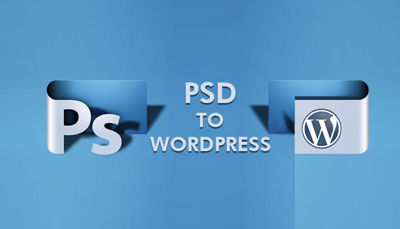PSD image form is the one we open with Adobe Photoshop or other image edit software but to run it online on WWW and even to do an optimized data maintenance with less time consumption, it is required we have it in a suitable format. A good looking user-friendly design and an efficient coding are the 2 basic needs of a great web design. Amateurs need to know the 2 basic phases of web development, web design and coding for which the knowledge of PHP, JavaScript, HTML and CSS is necessary. Photoshop is used for designing due to its easy options post which PSD to HTML/CSS is made; however coding it is not easy and this is where WordPress, the best open source web build and user-friendly CMS tool helps to create a high-quality website!
Conversion of PSD to WordPress isn’t complicated but at the same time requires 5 steps to be followed for the ease of doing it,
- Slicing PSD is the first and the foremost step which is to cut the design file into multiple image files so one doesn’t have to code the whole design in just one image. Each distinct component is woven into a single image post which the multiple images are combined seamlessly. Image editing using Ms Paint or Adobe Photoshop to get a pixel perfect image is recommended. Also note Features that can’t be dynamically created need to be cut in entirely while header, footer and others that are dynamic needn’t be cut in full.
- Index.html and style.css: Coding the sliced images into HTML and styling using CSS comes next. Complete roll over effects along with placing pixel perfectly is the main aim. Responsiveness or non-responsiveness is decided here and CSS accordingly used. Name the CSS file as style.css and the html as index.html. W3Schools, https://developer.mozilla.org/en-US/learn/css, TutsPLus give a good learning of HTML/CSS
- Index.html to WordPress theme: Creating the WordPress theme to upload into the WordPress software is the next; that is addition of functionality to the WordPress theme converted from PSD, using plugins as needed. Once the WordPress theme file structure is available, break the single html into multiple files based on the theme. Then break the index.html into the php files for index, header, footer, sidebar and the rest
- Add WordPress tags: WordPress function tags inbuilt in the theme are the best over complex html files. Add WordPress PHP tags to the earlier created WordPress theme files (tags and functions here http://codex.wordpress.org/Template_Tags and http://codex.wordpress.org/Function_Reference). Store these WordPress files and place in the folder wp-content/themes from WordPress installation chunk. The custom theme is then activated with WordPress dashboard
- Add the functionalities: More functionality is easily added with the relevant plugins or using the dashboard. Changing the core code is no more a pain. Installing a drop down (or any other functionality) is so easy with the plugin for it!
Implementing such nuances is very important when making the conversion from photoshop designs and a flawless coding expert is a must. To know more on each of these in web-trends or for services on WordPress Integration or PSD to WordPress or for CMS services or for anything in ecommerce services, don’t lose a chance to call us because you know you get the best from us always!






 Menu
Menu





